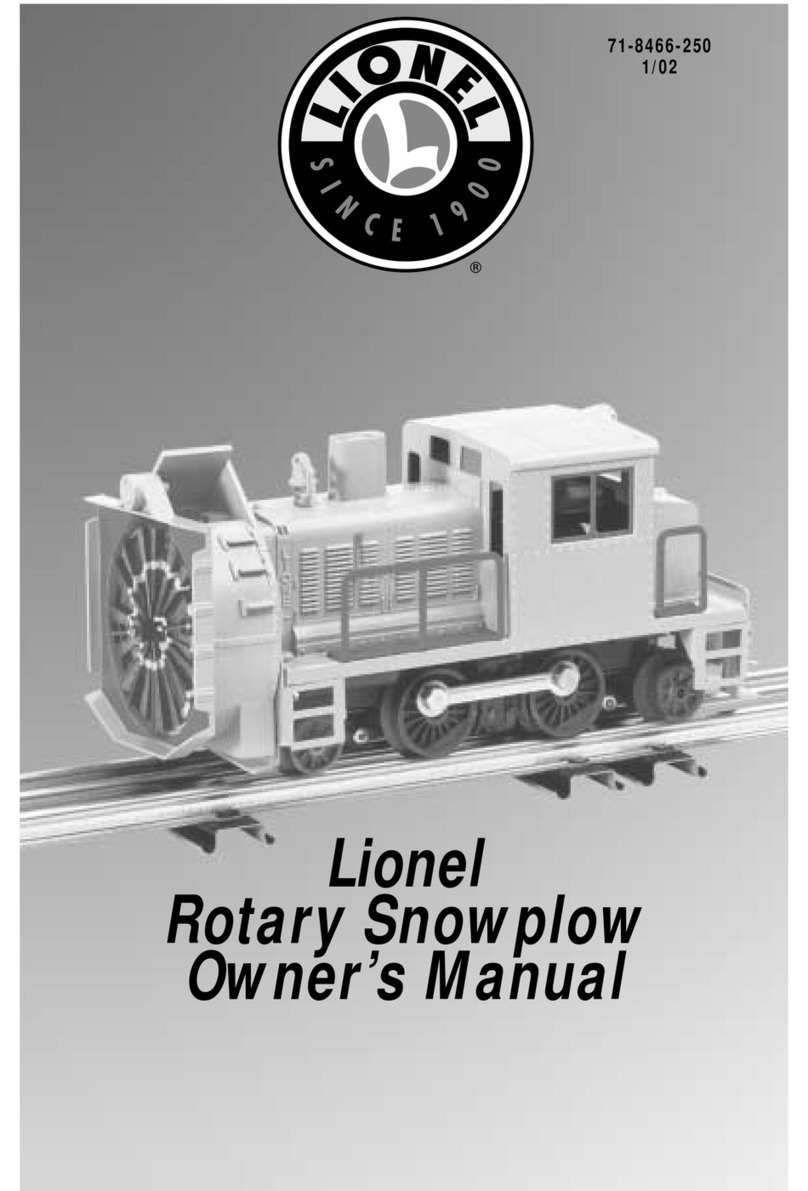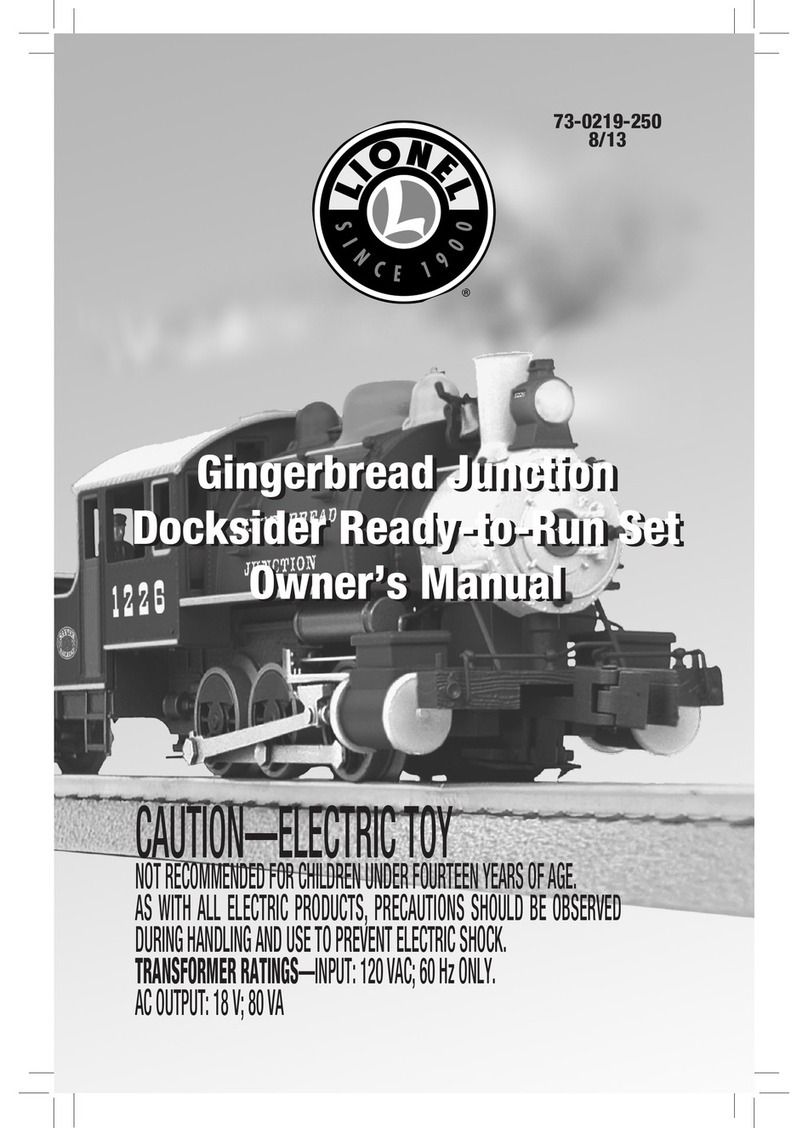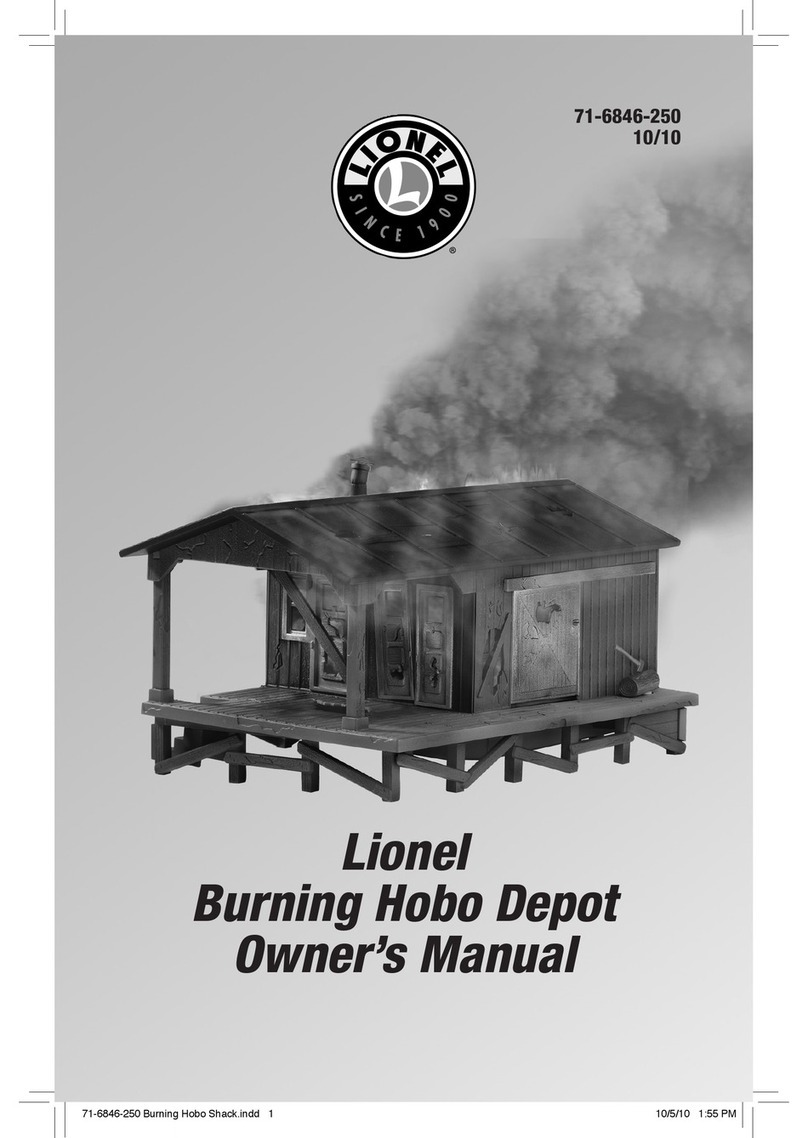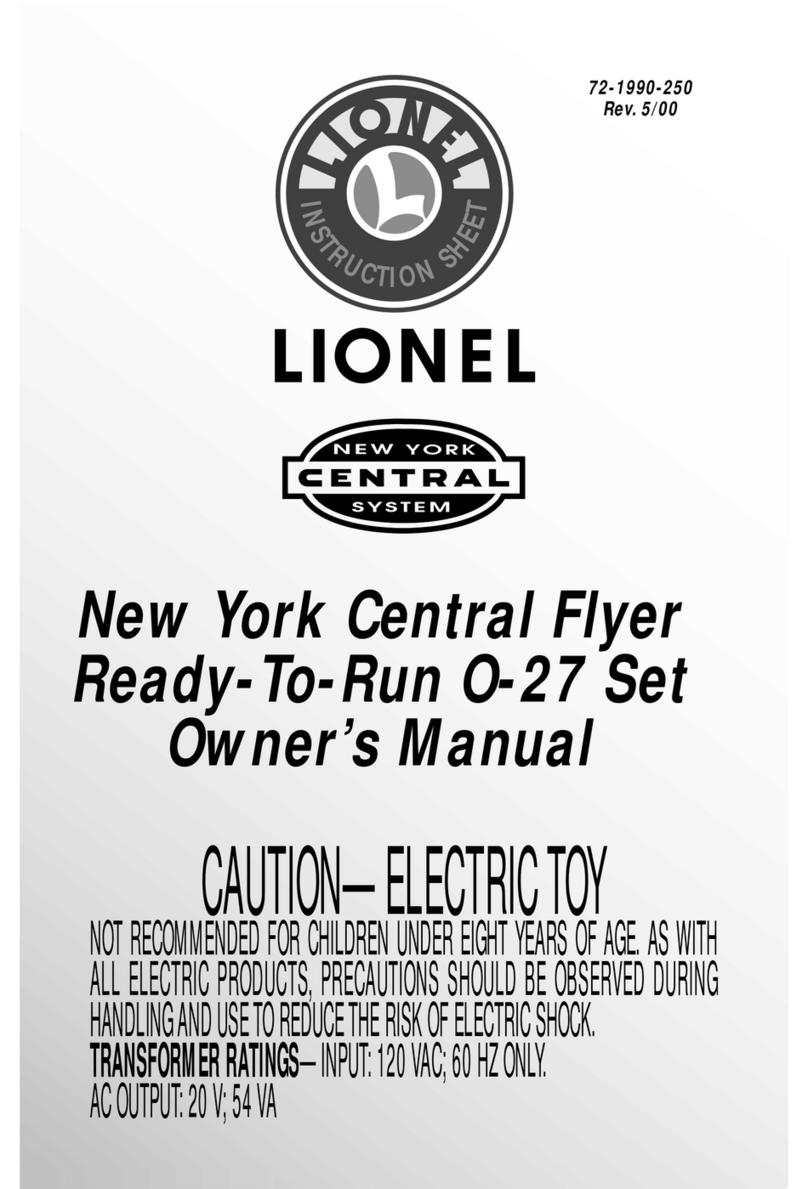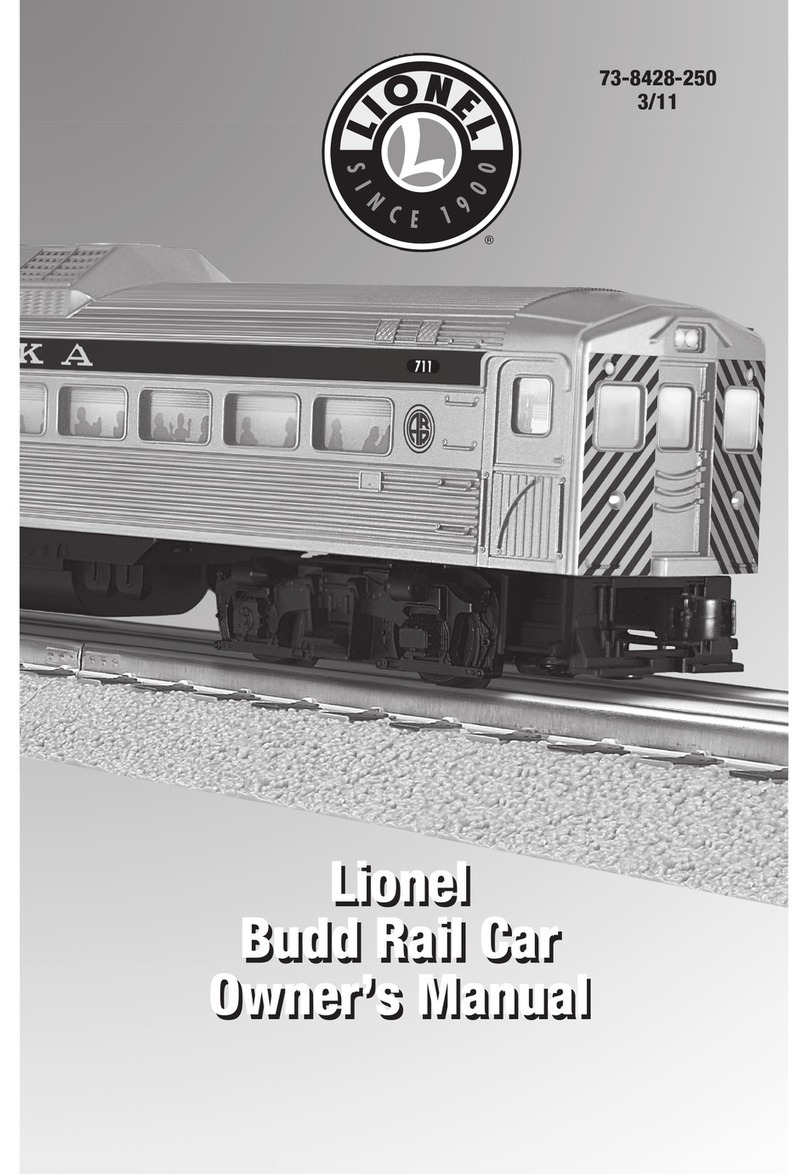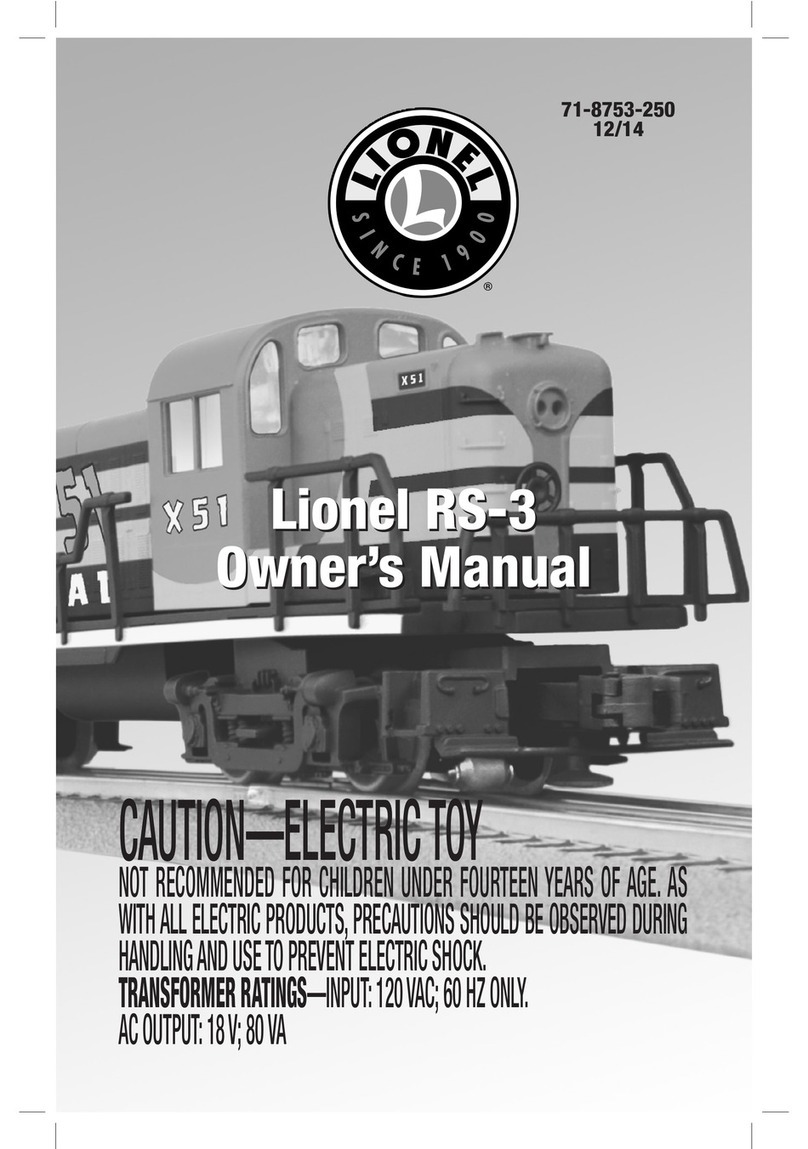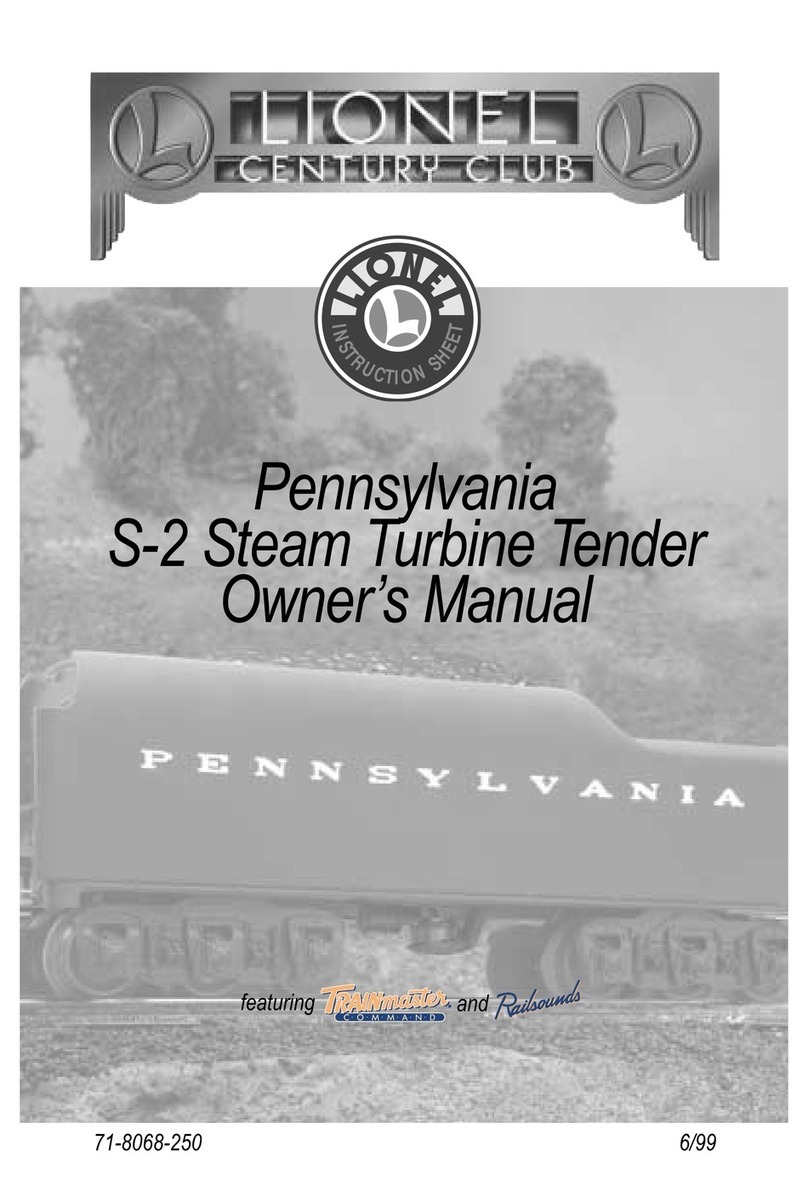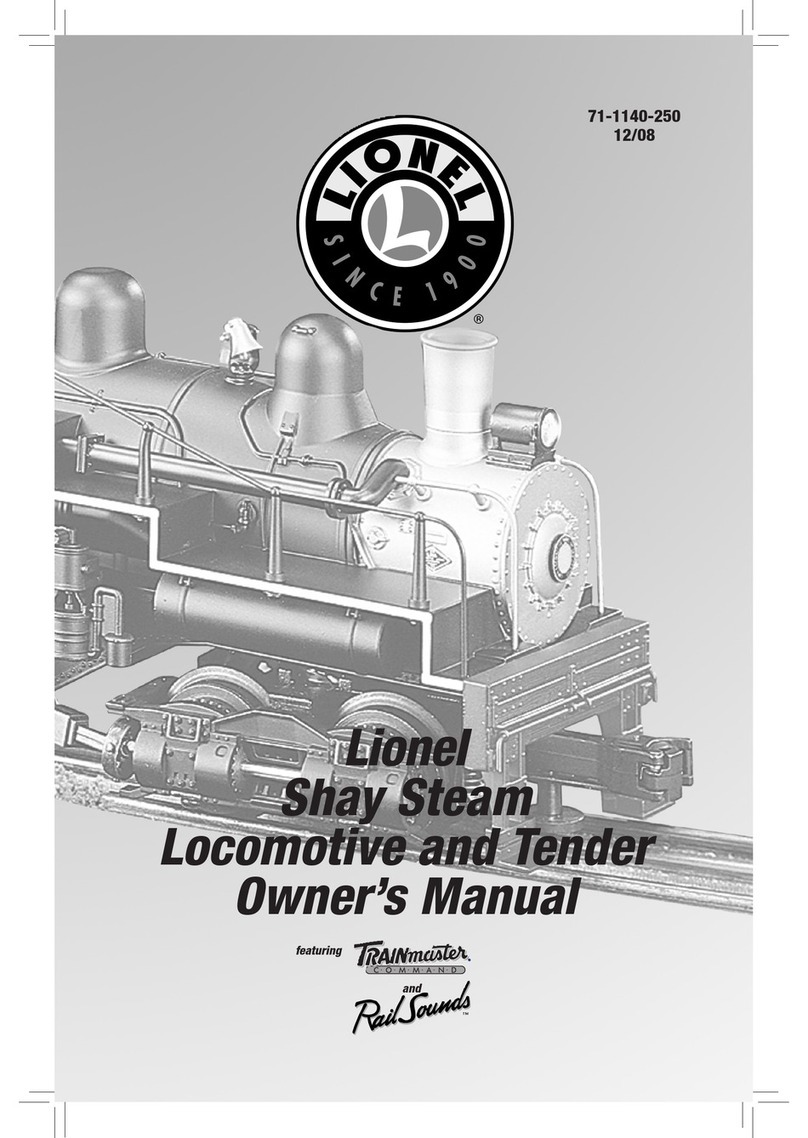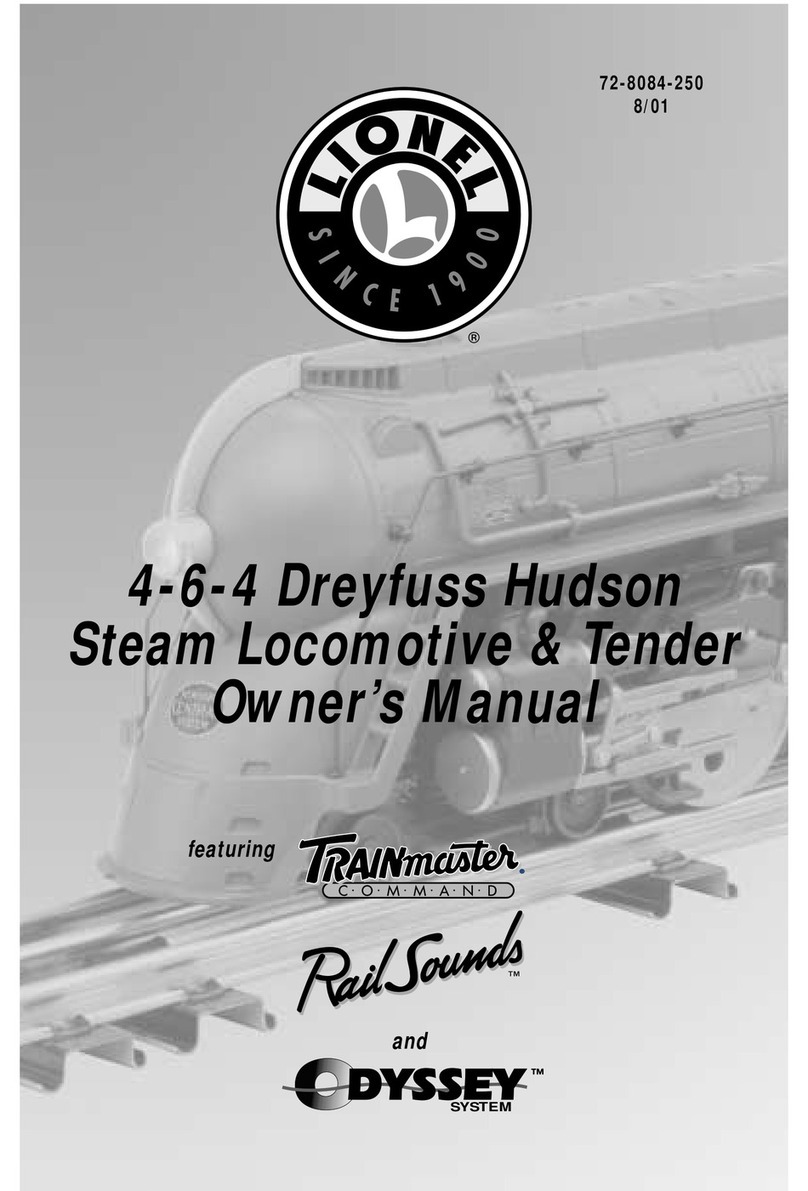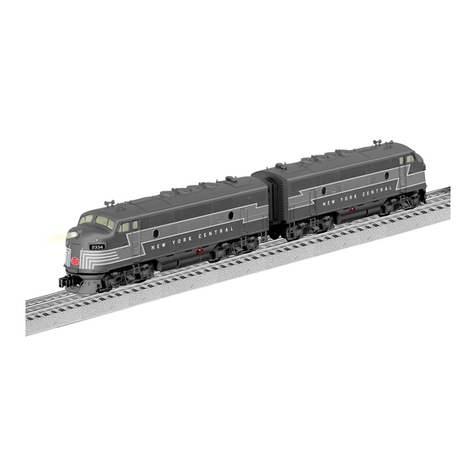Regulating Train Speed
The speed of the trainis regulated by moving the voltage
control on the transformer panel. The higher the voltage
the greater the speed. Most Lionel transformers provide at
least two different variable voltage ranges. The lower range
is for light trains; the higher range for heavier trains.
Reversing the Locomotive
Most Lionel locomotives can be stopped and reversed by
remote control.
The reversing mechanism, known as the
E.,.Unit,is inside the locomotive. It is operated by momentary
interruptions of current to the locomotive. This can be done
by operating the "Direction" control on the transformer or
by turning the voltage control'to "Off". (Accidental "short-
ing" of the track, loose connecting wires, missing track pins
or dirty track will also cause E-Unit to operate.)
Locomotives are made with Two-Position or Three-Posi-
tion E-Units. The Two-Position E-unit changes the direction
of the locomotive every time the current is interrupted. The
sequence is from Forward to Reverse and Forward again.
The Three-Position E-Unit has a neutral position and
operates in sequence of Forward, Stop, Reverse, Stop, etc.
How to Disconned the Reversing Mechanism
The E-Unit can be disconnected by moving the E-Unit
lever to its OFF position. With this mechanism disconnected
the locomotive will not reverse its direction after being
stopped, but will resume running in the same direction. The
E-Unit should be disconnected when you have an automatic
station, an operating bridge or insulated track blocks.
To disconnect E-Unit:
1. Start the locomotive going in the desired direction.
2. Stop it with your hand or by turning off track power.
(Do not operate the "Direction" control.)
3. Move the E-Unit lever to OFF.
Note:
If the E-Unit is disconnected while it is in Neutral
position, the locomotive will not run at all. Also, because it is
operated partly by gravity the E-Unit will. not work properly
if
the locomotive is held on its side or upside down.
In most steam-type locomotives the E-Unit lever is on top
of the boiler, back of the smoke stack or behind the sand
dome. In most diesel locomotives the E-Unit lever is under-
neath the body of the power section.
"Bumper" Reverse
No. 50 Section Gang Car, No. 60 Trolley Car, No. 52 Fire
Fighting Car and No. 69 Track Maintenance Car. All of
these units also have a figure or another component that
pivots with each change of direction. These do not have a
standard 3-position reverse operated by interruptions of
track current. Instead, these cars have a mechanism which
reverses the motor 'whenever their buffers strike a track
bumper or another car or locomotive.
The "neutral" position on this reversing mechanism is
halfway between the two operating positions and can be
set either by hand or by striking an obstruction just hard
enough to center the reversing mechanism.
SoundinCJthe Whistle or Horn
Following actual railroading practice most Lionel steam-
type trains are equipped with a two-tone whistle while
diesel and electric types contain a warning horn. .The
whistle mechanism is mounted in the locomotive tender.
Both the whistle and the horn can be sounded anywhere
on the track by operating the whistle controller built into
most modern Lionel transformers.
Note:
Lionel remote control horn and whistle can be used
only with
alternating current
having a frequency of more
than 40 cycles. When line frequency is less than 40 cycles
(some parts of Canada and some communities in the United
States use 25-cycle power line&) the whistle and horn will
sound continuously and should therefore be disconnected.
Operation of the Horn
The power for operating the whistle is supplied by the
track, but the warning horns use a flashlight cell supplied
with the locomotive. In most locomotives the dry cell can
be inserted from the bottom, but in some cases the loco-
motive body must be taken off. When replacing the dry cell
be careful to check the size. Some locomotives use size D;
others use a smaller size C.
Illustration above shows the location of the dry cell used
horns. Screw "A" hdlds the drycell cover.
Screw "B" holds the locomotive body.
The horn will lound whenever the car containing it is
held upside down because in this position the relay will
close through its own weight. Remove the flashlight cell
whenever the locomotive is to be transported. To pre-
vent possible damage due to leakage the cell should
also be removed when the locomotive is stored away.
"Mogne- Tradion"* Locomotives
"Magne-Traction" is an exclusive Lionel development where-
by magnetic force is supplied to the locomotive wheels by
mCJ'ansof powerful Alnico magnets to enable the locomotive
to t:limb grades and to pull heavier 10ddswithout slipping on
the track. "Super-O" Magne-Traction locomotives can pull
a train up a slope provided by Lionel No. 110 Trestle Set
(About
%
inch per section of track.) However, some of the
less expensive "027" locomotives will not pull a complete
train up a steep grade and you may find it necessary to
operate with a shorter train.
Be careful not to let pins, paper clips, carpet tacks or
other loose small iron objects come in contact with the
wheels, gears or axles because they may jam the locomo-
tive mechanism. To obtain the benefit of "Magne-Traction"
use only steel rails. Magnetism is not effective on aluminum
or brass rails .
• Registered in the United States Patent Office.
The sketch above illustrates how "Maqne-Traction" is achieved in modem
Lionel locomolives. On the left the magnet is placed next to the wheels. OD
the right it is inserted into the axle itself.
"Clean and Lubricate Your Equipment"


